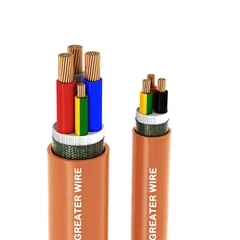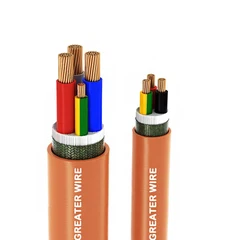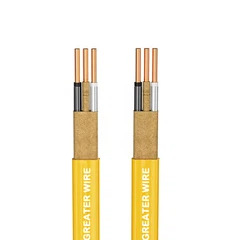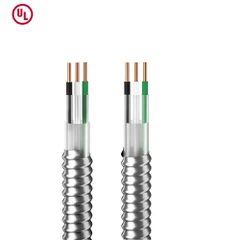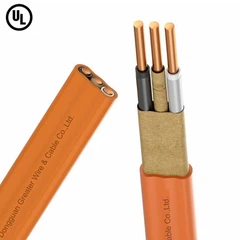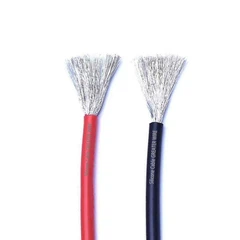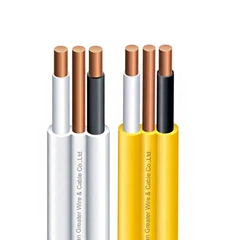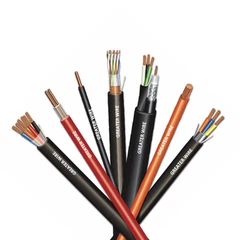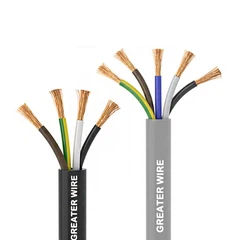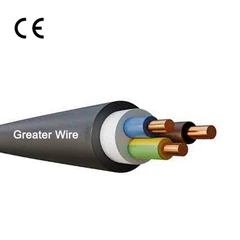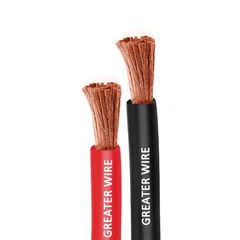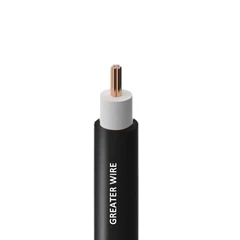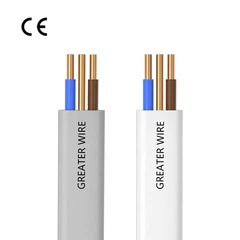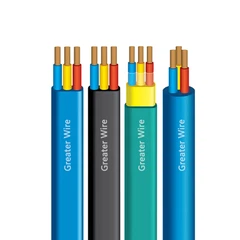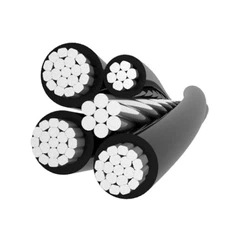When it comes to electrical wiring, selecting the right cable is crucial to ensure safety, durability, and compliance with codes and regulations. Among the various types of wiring options, THHN wire and NM cable are two of the most commonly used types. Although they are both used for similar purposes, they differ in construction, applications, and suitability for specific environments. In this article, we will compare THHN wire and NM cable, explore their differences, and provide guidance on how to choose between the two for your electrical installation needs.
1. Understanding THHN Wire
THHN wire stands for Thermoplastic High Heat-resistant Nylon-coated wire. It is a versatile electrical wire that is widely used for indoor wiring in both residential and commercial settings. THHN wire is designed to provide reliable heat resistance, abrasion resistance, and mechanical strength, making it suitable for use in a variety of applications.
Key Characteristics of THHN Wire:
Thermoplastic Insulation: The insulation material used in THHN wire is made from PVC (Polyvinyl Chloride), which can withstand temperatures up to 90°C (194°F) in dry environments.
Nylon Coating: The nylon coating adds an additional layer of abrasion resistance and chemical resistance, making it durable in both industrial and residential settings.
Voltage Rating: THHN wire is typically rated for 600V, which means it can be used in standard residential and commercial circuits.
Conductor Material: The conductors of THHN wire are usually made of copper, though aluminum is also sometimes used in larger sizes like 6 THHN and beyond.
Flexibility: THHN wire is relatively flexible and easy to install, especially in conduit systems, where it is often used for power distribution.
Common Applications of THHN Wire:
Residential Wiring: THHN wire is commonly used to wire electrical systems in homes, including circuits for outlets, lighting, and appliances.
Commercial Wiring: THHN wire is used in commercial buildings for wiring lighting circuits, control systems, and power distribution panels.
Industrial Wiring: Due to its robust construction and resistance to abrasion, THHN wire is used to wire industrial equipment and control systems.
2. Understanding NM Cable
NM cable, which stands for Non-Metallic Cable, is a type of electrical cable that is primarily used for residential branch circuits. It consists of one or more insulated conductors and is typically used in dry, indoor environments. NM cable is known for its ease of installation and cost-effectiveness.
Key Characteristics of NM Cable:
Conductors: NM cable consists of multiple conductors (typically two or more), including a hot wire, a neutral wire, and a ground wire. The conductors are usually made of copper.
Insulation: Each conductor is individually insulated, usually with PVC, providing protection against short circuits and electrical damage.
Outer Jacket: The entire bundle of conductors is encased in a non-metallic jacket, usually made of PVC or a similar material. This jacket offers protection against mechanical damage and environmental factors, but it does not provide the same level of protection against physical damage as metallic sheathed cables.
Voltage Rating: NM cable is typically rated for 600V, similar to THHN wire.
Flexibility: NM cable is also relatively flexible and is often used in residential homes due to its ease of use and quick installation process.
Common Applications of NM Cable:
Residential Wiring: NM cable is commonly used for wiring electrical outlets, lighting circuits, and appliances within homes. It is particularly suitable for dry locations.
Indoor Use: NM cable is typically used in interior walls or ceilings where it is not exposed to external environmental factors like moisture or extreme temperatures.
3. Key Differences Between THHN and NM Cable
While both THHN wire and NM cable serve the purpose of electrical wiring, there are several key differences between them. These differences relate to construction, applications, and environmental suitability.
a. Construction and Composition
THHN Wire: THHN wire consists of a single conductor, which is insulated with PVC and coated with a nylon layer. This construction makes THHN wire flexible and durable, providing additional protection against mechanical damage and abrasion.
NM Cable: NM cable, on the other hand, is a bundled cable made up of multiple conductors, typically one hot wire, one neutral wire, and one ground wire, all individually insulated and wrapped in a single outer jacket. The conductors are often made of copper, and the outer jacket is usually made of PVC.
b. Suitability for Wet or Damp Conditions
THHN Wire: THHN wire is designed primarily for dry conditions and should be used in areas where it is not exposed to moisture. However, certain types of THHN wire are labeled as THWN (which stands for Water-resistant), meaning they can handle some exposure to moisture.
NM Cable: NM cable is also intended for dry locations and should not be used in areas exposed to moisture. It is typically installed in walls, ceilings, and floors that are not subject to water exposure.
c. Installation and Flexibility
THHN Wire: THHN wire is often used in conduit systems. It is typically installed in industrial or commercial settings where wiring needs to be protected from external environmental factors. THHN wire is relatively flexible, but it still requires careful installation, especially in long runs or tight spaces.
NM Cable: NM cable is easier and quicker to install compared to THHN wire. It is widely used in residential wiring and is often installed directly into walls without the need for conduit protection. NM cable is particularly favored for its simplicity and speed of installation.
d. Durability and Protection
THHN Wire: THHN wire is highly durable and resistant to abrasion, chemicals, and heat. Its nylon coating adds an extra layer of protection, making it suitable for industrial and commercial applications where the wire might be exposed to physical damage or harsh chemicals.
NM Cable: While NM cable is durable, its protection is primarily limited to the outer PVC jacket. This makes it less resistant to mechanical damage compared to THHN wire. It is more suitable for indoor environments where physical damage is less likely.
e. Cost
THHN Wire: THHN wire tends to be more expensive than NM cable, primarily due to its durable construction, specialized materials, and additional protective coating. However, its higher cost is often justified by its superior performance in industrial or commercial applications.
NM Cable: NM cable is generally more affordable, making it a popular choice for residential wiring where the wiring does not need to withstand harsh conditions or exposure to the elements.
4. When to Use THHN Wire vs. NM Cable
Both THHN wire and NM cable are essential for electrical installations, but they are best suited for different applications due to their specific features.
When to Use THHN Wire:
Industrial and Commercial Wiring: Use THHN wire in factories, offices, and other commercial buildings where wiring may need to be installed in conduit or exposed to potential damage. Its durability and abrasion resistance make it ideal for such environments.
Heat-Resistant Applications: If the electrical system involves environments with higher heat levels, THHN wire is a good choice due to its ability to withstand temperatures of up to 90°C in dry locations.
Conduit Systems: THHN wire is commonly used in conduit systems for commercial and industrial installations. Conduit provides extra protection for the wire, especially in areas with high physical stress or exposure to harsh chemicals.
When to Use NM Cable:
Residential Wiring: NM cable is widely used for residential wiring in dry locations. It is perfect for wiring circuits in walls and ceilings, such as for outlets, lights, and appliances.
Quick and Easy Installations: If you're working on a project that requires a straightforward and easy installation, such as in a new home or a remodel, NM cable is an excellent choice.
Cost-Effective Installations: For budget-conscious projects, NM cable offers a more affordable alternative to THHN wire, making it ideal for low-cost residential applications.

